Look for a red cube. Do you see it?
The question was posed to an audience of maybe 40 as we filed into the black box theater at The Shed to witness KAGAMI, an alternative reality (AR)/virtual reality (VR) installation by Japanese composer Ryuichi Sakamoto and Tin Drum, a mixed-reality production studio. It made no sense until your VR goggles were properly fitted to sit at an odd angle, like they were ski goggles riding up on the back of your helmet, in danger of falling off. When the angle was right, the red cube was there. It felt like the most natural thing in the world.
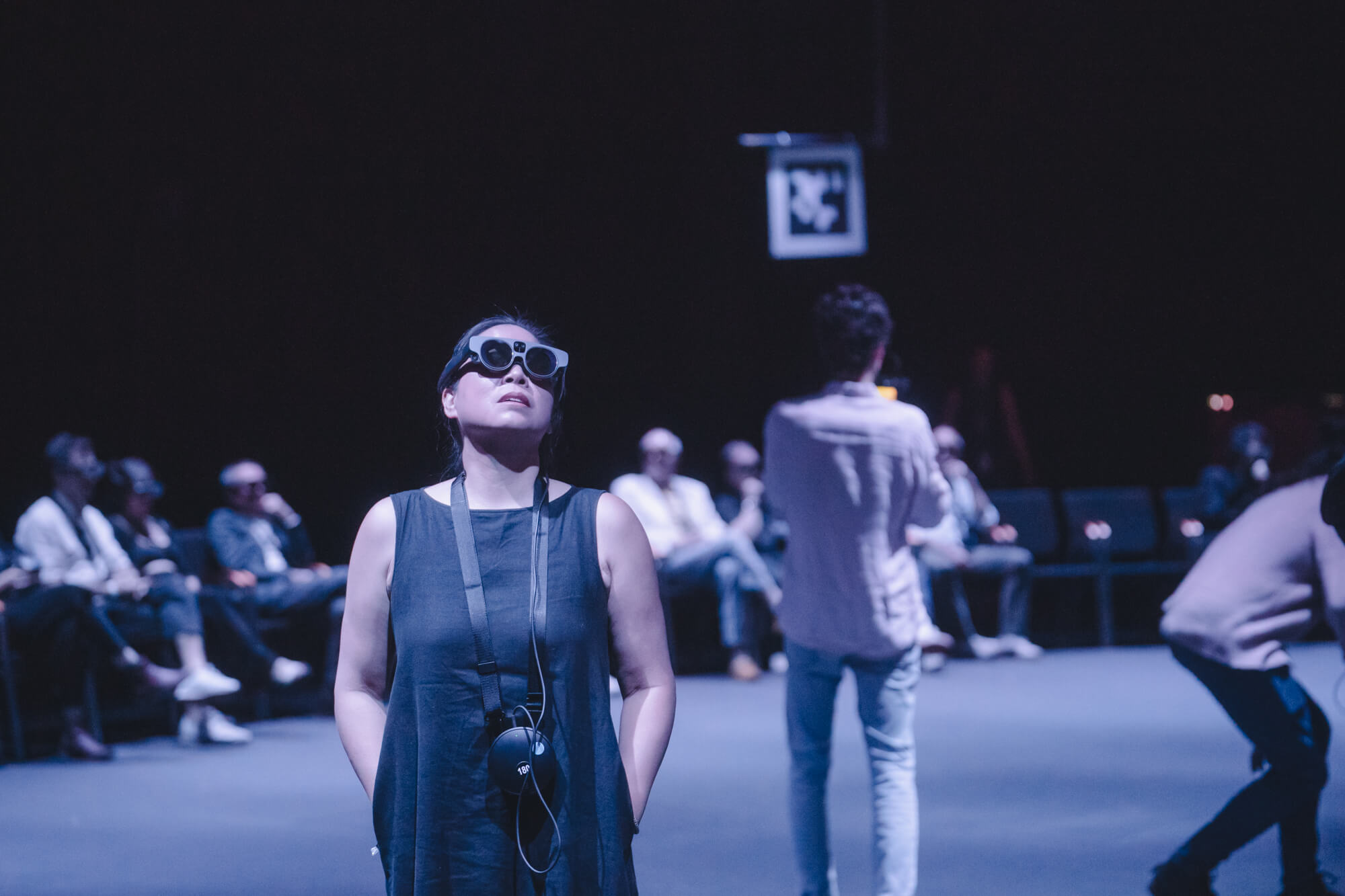
I grew impatient as others needed replacement goggles, which then needed to be recalibrated via a poster-sized QR code. But just a few minutes later, a pop-up window exploded in front of my eyes—“Overheating!” it read. The fan-battery attachment that hung around my neck was whirring louder than it had been a few minutes ago, and I had to wander over to a black-suited attendant and request my own replacement headset. This took even longer than the others, as they are not designed to fit over eyewear. Internal screens are corrected to match optical prescriptions.
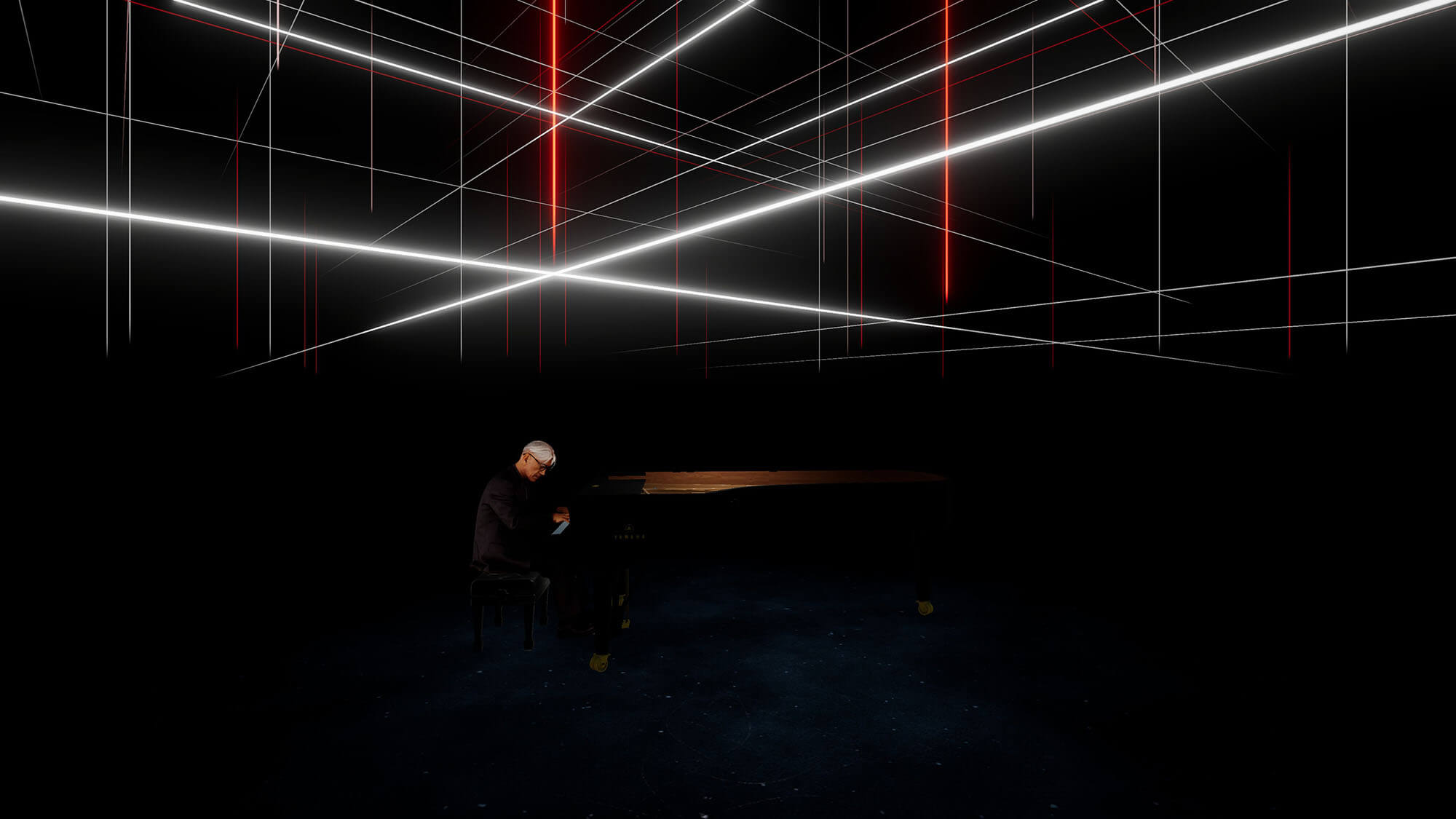
These were the technical kinks during the preview showings of KAGAMI, which translates to “mirror” in Japanese. Representing a new type of concert experience blending moving photography with mixed reality, the effect is a fusing of dimensional art with the traditional classical music concert format. It was also a bittersweet experience, as Sakamoto, a legendary pianist, film score composer, and dance music pioneer, died earlier this year after a years-long battle with cancer. The artist’s close collaboration to produce the show resulted in an eerie remembrance. In just a handful of spoken words recorded as part of the concert, we see Sakamoto already grappling with his legacy in the 21st century and how his work might live on in a new way. In a final meditation on the work, he wrote, “There is, in reality, a virtual me. This virtual me will not age, and will continue to play the piano for years, decades, centuries. Will there be humans then?… Ah, but the batteries won’t last that long.” In this case, the tightly controlled, almost music video–like recreation of ten songs, handpicked and performed “live” by Sakamoto himself, can be experienced forever—or as long as VR lasts.
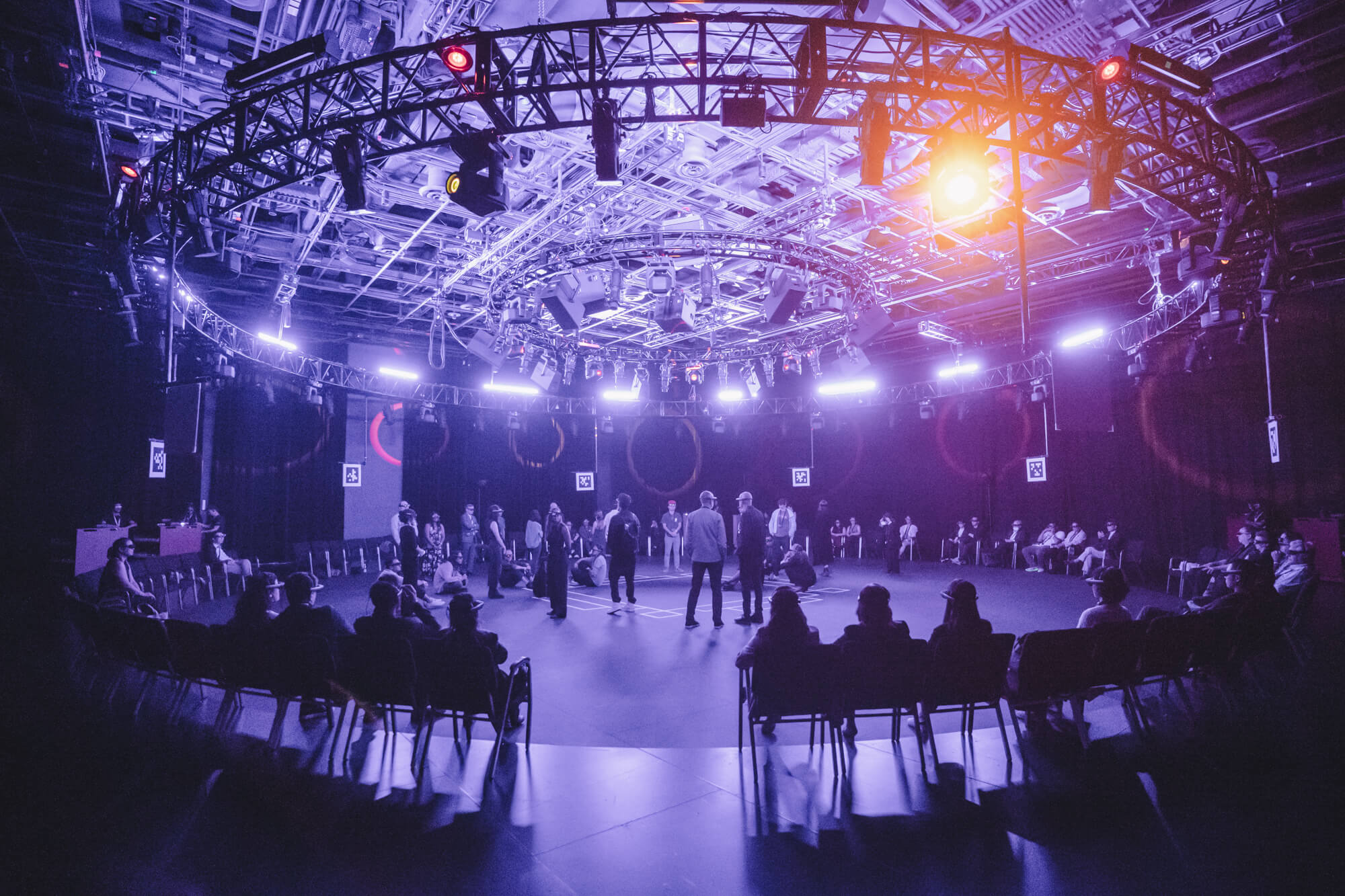
The setlist included melodies that put Sakamoto on the map, per se, rather than his more experimental works. Before leaning into “Energy Flow,” his avatar quipped that he never quite understood why this song topped the Japanese charts when it was released in 1999. Even today, DJs and producers recognize the unique experiment that was Sakamoto’s first project, Yellow Magic Orchestra (YMO), and the strange, almost Mario Kart–like beats they performed with 1980s glib and vigor. But these were absent from KAGAMI, which instead highlights Sakamoto’s mastery of the keys that continued even on his final album, 12, that could be slotted in the genres of ambient experimental/electronic piano music—this, he largely invented. Today the label includes other genre-bending musicians like Nils Frahm and Max Richter.
During the 50-minute performance, we were listening to these beautiful new studio recordings of Sakamoto’s discography, performed live for KAGAMI specifically, capturing both the audio as well as the presence and movement of the musician himself. But we were also looking at more than just the man at the piano. Simultaneously, viewers were enveloped by curated video footage. Six frames of varying widths fill the seemingly endless VR viewport as you moved your head, though narrative connections were unclear: 19th century footage of horse-drawn firefighter brigades and student protests cycled in and out between more contemplative moments that felt like being caught in a rainstorm or a field of shooting stars.
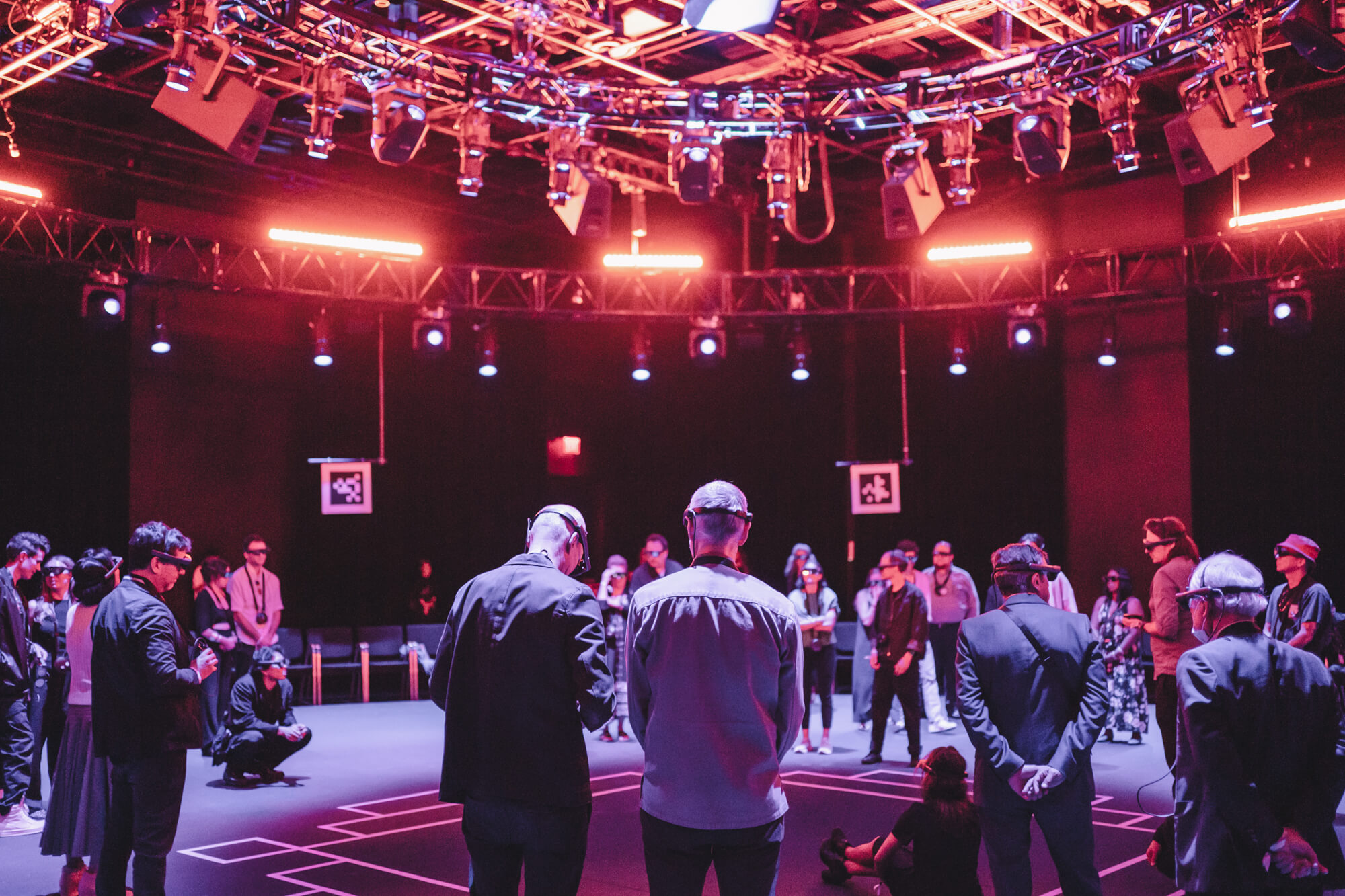
I wanted the sound to feel more immersive like a Dolby IMAX theater, an audiophile nightclub, or something comparable to the live orchestras Sakamoto performed with and directed. Here, small speakers—by world-class venue standards like The Shed’s—merely hung from the ceiling in a way that made the theater feel like a big basement. The sound was there, and at an appropriate volume, but it felt secondary when compared to the pioneering VR technology. Isn’t a concert about the sound? Is this experience even a concert? Hard to say.
Whatever it is, KAGAMI’s music filled the room as we all walked, hesitantly—testing the reliability of our augmented vision— around our circular seating arrangement to get a better angle of Sakamoto’s ghostly face. I could see the wisps of hair bob up and down with his breath and movement at the keys, or glimpse inside the piano itself, where images of a softly burning flame, stars, or some tangled tree roots replaced the instrument’s innards.
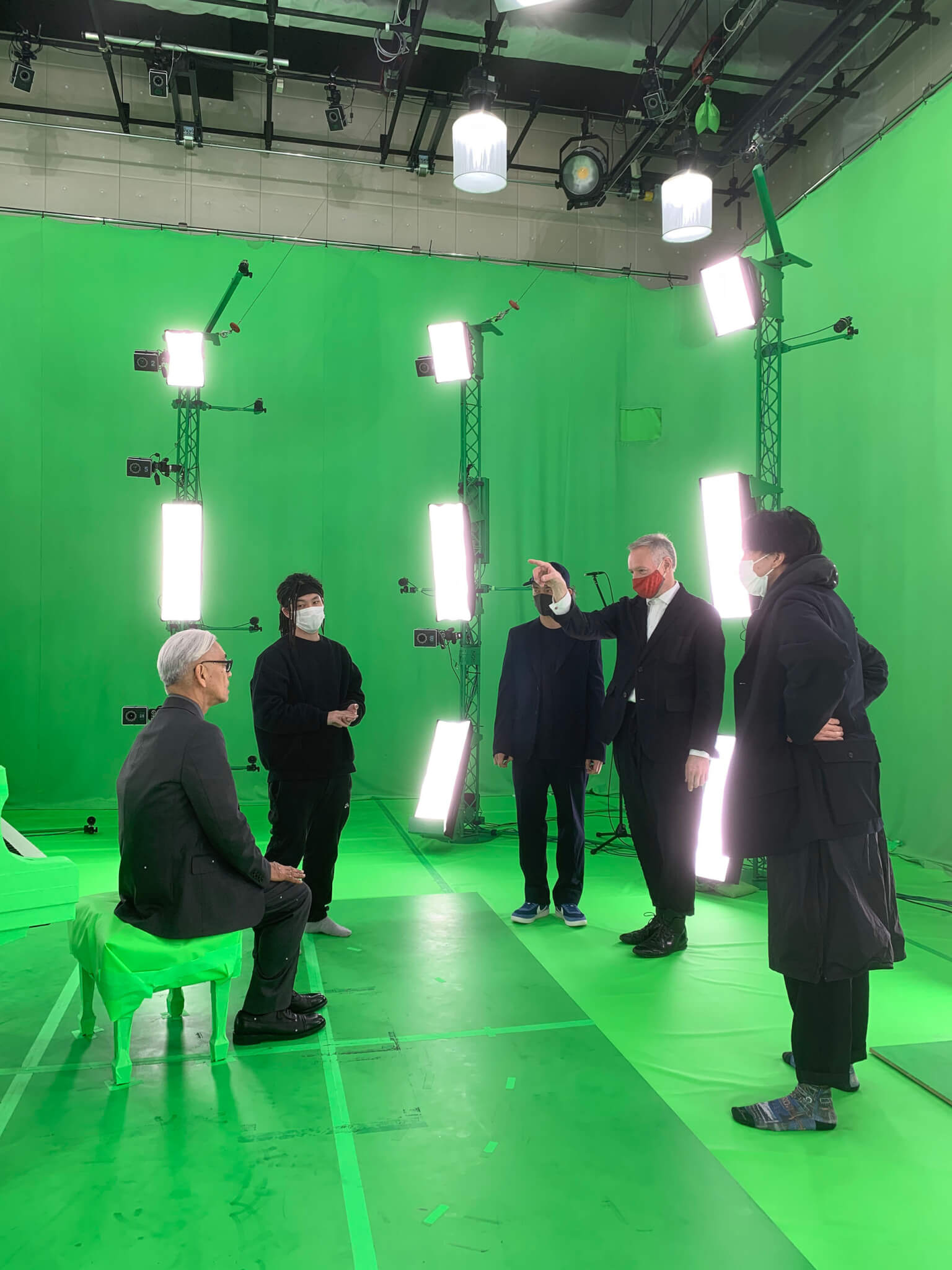
I never knew Sakamoto, but the VR reconstruction of his person, albeit fixed in his older age, didn’t feel as uncanny as I feared. Still, the theater got colder and quieter when the composer said a few parting words explicitly dedicating the last song to the memory of his longtime friend and collaborator Bernardo Bertolucci, who commissioned a young Sakamoto to score his 1987 film The Last Emperor, the composer’s first soundtrack. The finale, titled “BB,” is a composition Sakamoto “wrote in the 10 minutes after hearing of [his] friend’s passing.” It is chilling to hear the voice of a sick man dedicating the final notes to a colleague who recently died because Sakamoto, at the time of the rendering, couldn’t have known that it would actually be him that the goggled audience would be mourning.











